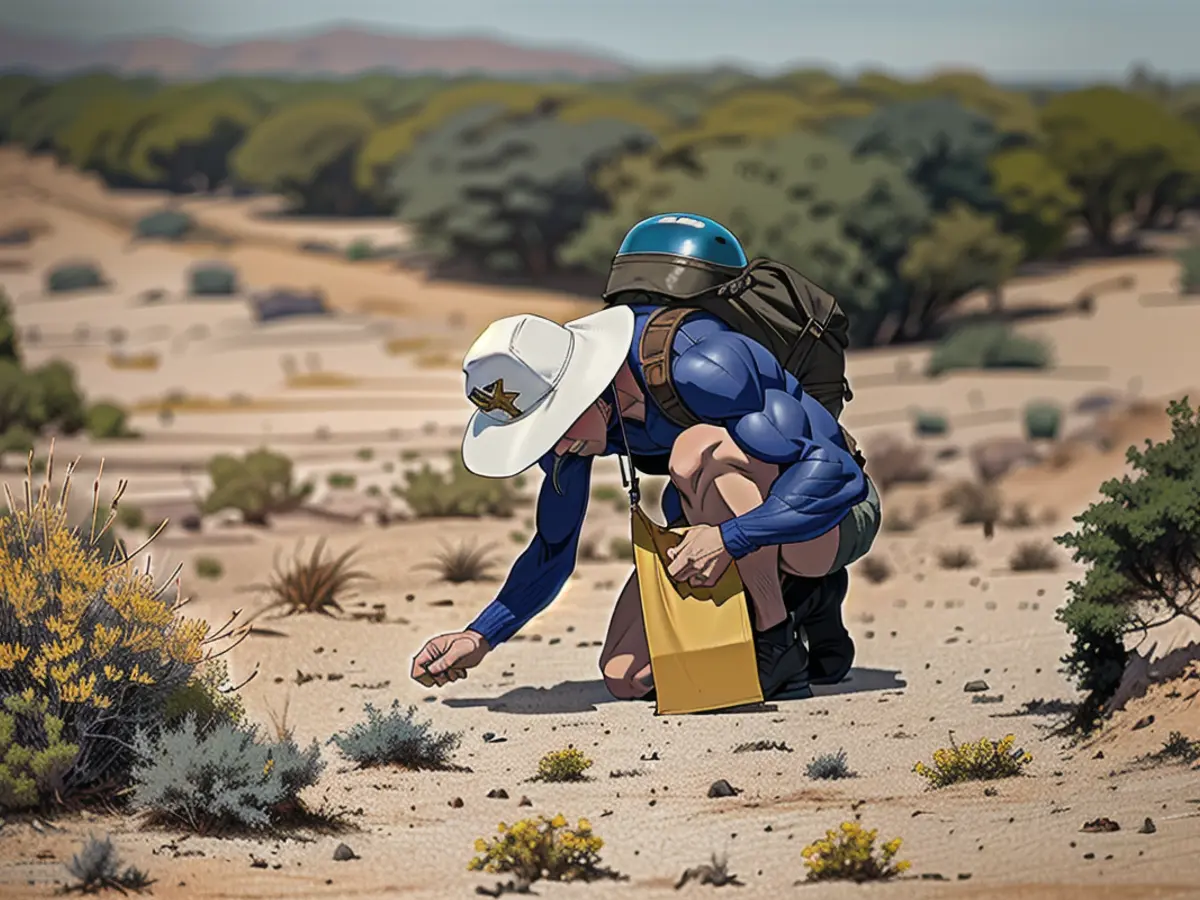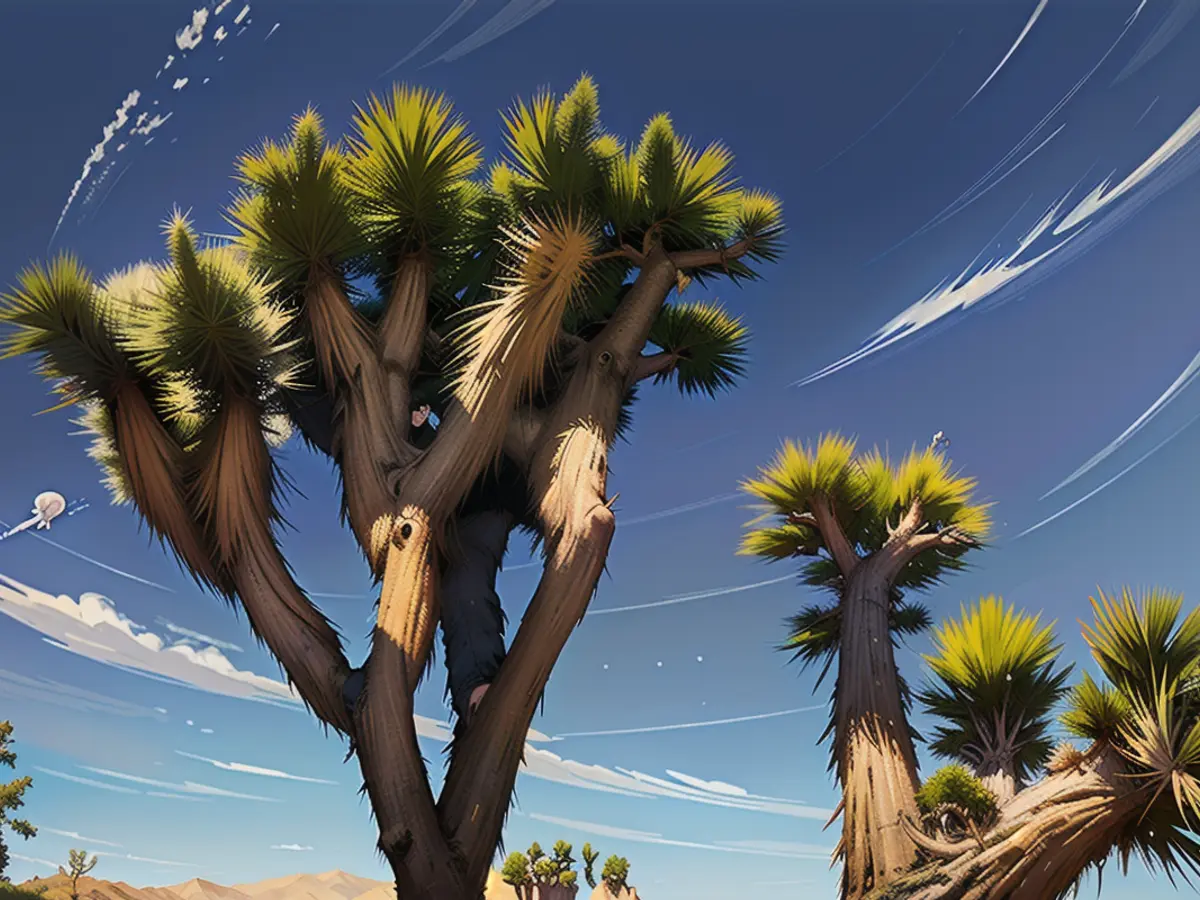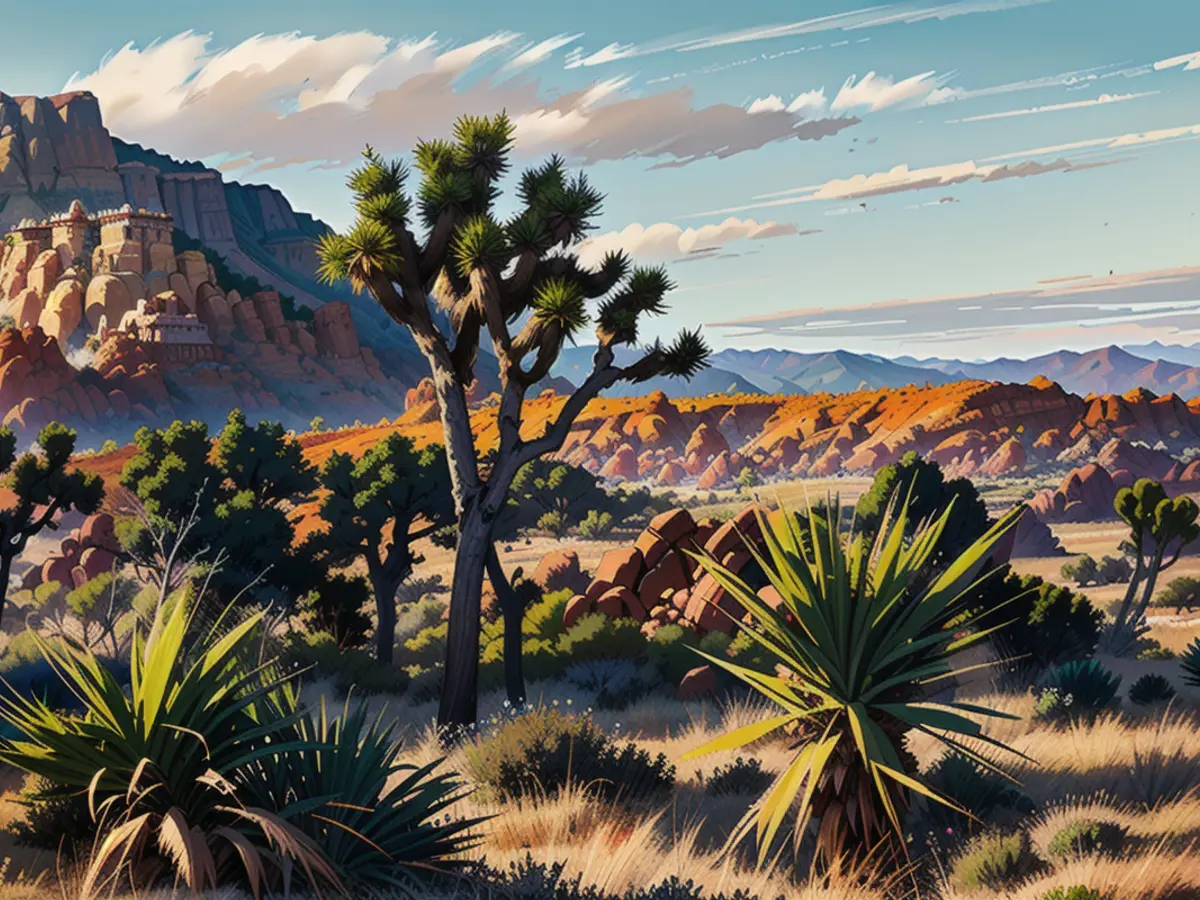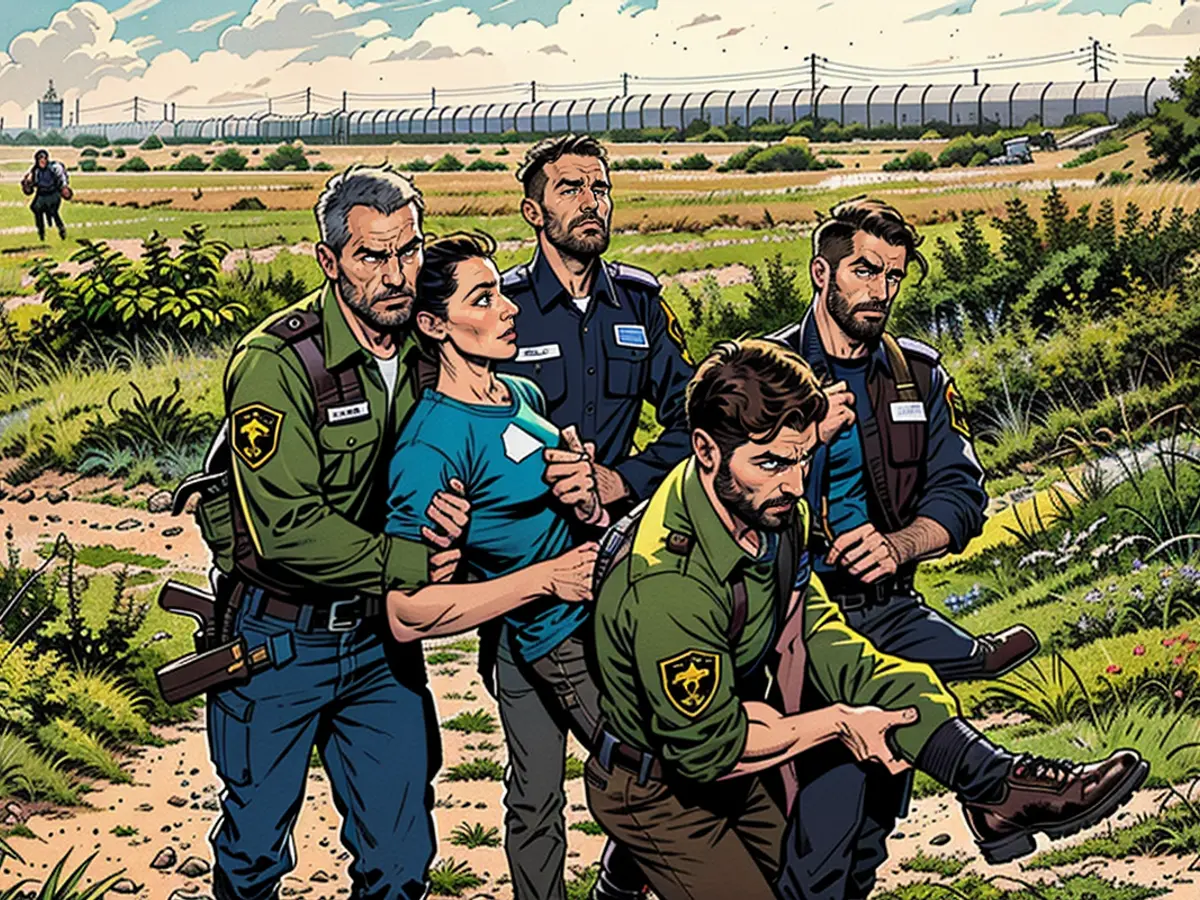Saving Lives: The Mojave Desert's Seed Bank Shields Endangered Ecosystem from Extinction
In the heart of southern California's dry Mojave Desert, outside the bustling city landscape, lies a hidden gem. This desolate section of the world is home to numerous natural wonders, but one in particular is being protected by a small team led by Madena Asbell.
Dressed in long sleeves, pants, and wide-brimmed hats to shield themselves from the relentless sun, the four-person group is on a quest. They're searching for a unique plant known as erodium texanum, also called Texas stork's bill or heronbill. Specifically, they're seeking its seeds.
"There's so much life here," Asbell reveals, "but you may not realize that while you're in the desert."
Asbell serves as the director of plant conservation for the Mojave Desert Land Trust (MDLT), a non-profit organization that works hard to safeguard and preserve the Mojave and Colorado desert landscapes of California. Around a quarter of the state consists of desert terrain, home to approximately 2,400 diverse plant species, according to the land trust.
Inspired by this biologically rich environment, Asbell had a brilliant idea: why not preserve the seeds that enable substantial sections of life in the desert? Thus, the Mojave Desert Land Trust seed bank was born.
"The aim is to safeguard this remarkable genetic diversity and make it accessible for restoration or reintroduction of species if a disaster were to somehow wipe out a population," Asbell illuminates. "Plants are the cornerstone of most ecosystems, so when we protect these plants, we're simultaneously protecting the environment and its inhabitants like the desert tortoise, burrowing owls, and pollinators."
More Than a Million Seeds, and Growing!
In a climate that unceasingly evolves, the seed bank concept proved to be a forward-thinking idea the organization needed, asserts Kelly Herbinson, the MDLT executive director.

"As a land trust, we realized that solely focusing on preserving or acquiring land wouldn't be sufficient – we needed to implement more comprehensive initiatives to ensure the longevity of the land," Herbinson says.
MDLT officially launched the seed bank initiative in 2016, garnering the title of "a Noah's Ark of southern California."
Though housed at the MDLT headquarters in Joshua Tree, California, the seed collection is kept safe in three white refrigerators. With over 5 million seeds from nearly 250 species, the collection keeps growing.
The seeds come from the dedicated teams conducting surveys and are evaluated based on their viability. The critical assessment includes examining seed pods to ensure they're full and have not endured undue damage from insects or mold.
Subsequently, the seeds dry in paper bags neatly placed on racks before being preserved in jars for long-term storage inside the refrigerators.
These jars, in their myriad shapes and sizes, fill the shelves. Some feature diminutive containers like Gerber baby food jars, whereas others display larger pickle jars – all of them featuring white labels displaying seed names, counts of jars in the collection, and seed quantities.
The seed bank is yet another example of the wide-ranging variation present in the desert, mirroring the diverse array of seeds. Certain seeds are light and wispy, while others are slender or round. Some are equipped with a denser consistency, similar to peppercorns, and others seem to resemble pumpkin seeds. Ubiquitous colors span from brown, red, and olive green.

Asbell elaborates, explaining that the seed bank's duties involve scouting, collecting, processing, and managing databases.
After receiving a sizeable $3.2 million grant from California's Wildlife Conservation Board in 2020, MDLT was able to expand and develop the project further. "We're already providing seed to researchers studying the influence of climate change on specific species in our seed vault," Asbell notes. "Knowing precisely where you've collected each seed, its originating population, and its elevation is critical when attempting to restore the environment."
The Need for Urgency
In recent years, the golden state has witnessed the numerous consequences of climate change, such as more frequent and intense wildfires. In addition, invasive grasses have begun to take over swaths of the desert, acting as fuel for increasing wildfires.
"Climate change brings drought and longer dry spells, which puts enormous stress on desert ecosystems," Asbell states.
"We're witnessing incredibly significant challenges that may endanger the very existence of these landscapes. To be able to protect the genetic diversity of the planet for potential future needs is genuinely remarkable — it's incredibly vital work."
Kelly Herbinson, the executive director of MDLT, adds, "The desert environment seems like a lifeless place at first glance. Despite this, it teems with biodiversity and vibrant life that isn't as evident as in rainforests or oceans. However, there's a pressing need to better protect this region due to its comparative lack of public awareness and appreciation."

"There is an amazing native species that is very alluring and has a rather unique shape," describes Asbell. "It can be found all over the place, but is also under serious threat, so we're really focused on ensuring the Joshua tree's survival."
Herbinson concurs, "The twisted Dr. Seuss-like tree that lends its name to a national park in the area may not last as our climate changes because the seeds are predominantly dispersed by rodents."
For the species to survive, it may need to relocate to a more suitable habitat - one that is cooler and at a higher altitude. Unfortunately, the distance is too far for the rodents, who disperse seeds no more than 100 feet from the tree. This is where the seed bank could assist.
"It allows us to aid the Joshua tree in migrating more quickly than it would on its own, ensuring its survival in the face of a changing climate," says Herbinson.
Currently, close to 70,000 Joshua tree seeds are stored away in the seed bank, some of which could potentially be planted in cooler locations if needed. It's all about striking the right balance: securing enough seeds for a restoration project in case of an emergency, but not so many that it disrupts the natural ecosystem.
"This is a prehistoric landscape," asserts Asbell. "Thinking about how long-lived many of these organisms have been around and the history they've witnessed is incredibly significant."
"Seeds represent life," says Asbell passionately. "Growing a seed is a joyous experience. It's life-affirming, and in our current world, it's essential to hold onto that and cherish it."

CNN's Adeline Chen contributed to the reporting.

Read also:
- This will change in December
- Dikes withstand water masses so far - Scholz holds out the prospect of help
- Fireworks and parties ring in 2024 - turn of the year overshadowed by conflicts
- Attacks on ships in the Red Sea: shipping companies avoid important trade route
Source: edition.cnn.com








